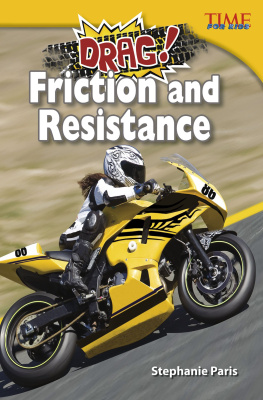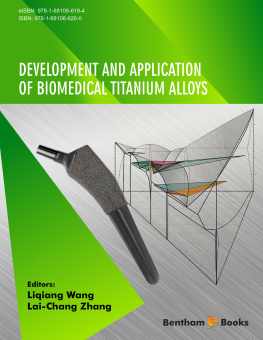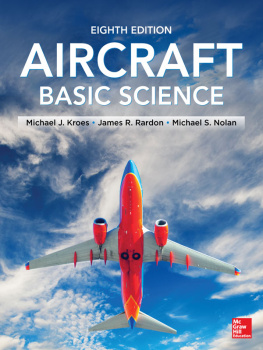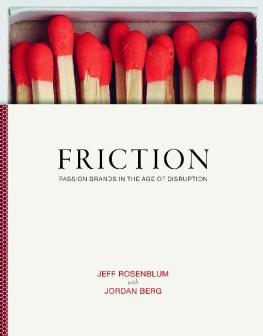Table of Contents
List of tables
- Tables in Chapter 2
- Tables in Chapter 4
- Tables in Chapter 5
- Tables in Chapter 6
- Tables in Chapter 7
List of illustrations
- Figures in Chapter 2
- Figures in Chapter 3
- Figures in Chapter 4
- Figures in Chapter 5
- Figures in Chapter 6
- Figures in Chapter 7
- Figures in Chapter 8
Landmarks
Table of Contents
Friction Stir Welding of High-Strength 7XXX Aluminum Alloys
Rajiv S. Mishra
Mageshwari Komarasamy
Department of Materials Science and Engineering, University of North Texas, Denton, TX, USA

Copyright
Butterworth-Heinemann is an imprint of Elsevier
The Boulevard, Langford Lane, Kidlington, Oxford OX5 1GB, UK
50 Hampshire Street, 5th Floor, Cambridge, MA 02139, USA
Copyright 2016 Elsevier Inc. All rights reserved.
No part of this publication may be reproduced or transmitted in any form or by any means, electronic or mechanical, including photocopying, recording, or any information storage and retrieval system, without permission in writing from the publisher. Details on how to seek permission, further information about the Publishers permissions policies and our arrangements with organizations such as the Copyright Clearance Center and the Copyright Licensing Agency, can be found at our website: www.elsevier.com/permissions
This book and the individual contributions contained in it are protected under copyright by the Publisher (other than as may be noted herein).
Notices
Knowledge and best practice in this field are constantly changing. As new research and experience broaden our understanding, changes in research methods or professional practices, may become necessary.
Practitioners and researchers must always rely on their own experience and knowledge in evaluating and using any information or methods described herein. In using such information or methods they should be mindful of their own safety and the safety of others, including parties for whom they have a professional responsibility.
To the fullest extent of the law, neither the Publisher nor the authors, contributors, or editors, assume any liability for any injury and/or damage to persons or property as a matter of products liability, negligence or otherwise, or from any use or operation of any methods, products, instructions, or ideas contained in the material herein.
Library of Congress Cataloging-in-Publication Data
A catalog record for this book is available from the Library of Congress
British Library Cataloguing-in-Publication Data
A catalogue record for this book is available from the British Library
ISBN: 978-0-12-809465-5
For Information on all Butterworth-Heinemann publications visit our website at http://www.elsevier.com/

Publisher: Joe Hayton
Acquisition Editor: Christina Gifford
Editorial Project Manager: Heather Cain
Production Project Manager: Anusha Sambamoorthy
Cover Designer: MPS
Typeset by MPS Limited, Chennai, India
List of Figures
| Summary of various reactions in Al-Zn-Mg-based alloys | 12 |
| Schematic illustration of the FSW process | 16 |
| A macrograph of the cross-section showing various regions in FSP 7075-T651 | 17 |
| Various defects in FSW welds | 19 |
| Temperature distribution adjacent to the FSW nugget of 7075-T651 | 22 |
| (A) Location of the thermocouples and (B) peak temperature variation in three locations as a function of the welding speed | 23 |
| (A) Torque and peak temperature variation as a function of rotation rate under two conditions, (B) temperaturetime at 8 ipm, and (C) time spent above 200C in HAZ under all the three conditions | 23 |
| Temperaturetime profiles (A) for welds with pitch 0.28 mm/rev and (B) for welds with 180 rpm | 25 |
| TEM micrographs of displaying the grain structure in different weld zones, (A,B) base metal, (C) HAZ, (D) TMAZ I, (E) TMAZ II, and (F) DXZ | 32 |
| SAXS maps (volume fraction and size) of precipitates in various zones for the T3 and T79 welds under low and high welding speeds | 35 |
| Postweld microstructural characterization of different weld zones, grain boundary precipitates in (A) nugget, (D) TMAZ, (G) HAZ; bimodal precipitates in (B) nugget, (E) TMAZ; fine strengthening precipitates in (C) nugget, (F) TMAZ; (H) coarsened HAZ precipitates | 37 |
| Precipitate structure in (A) base material, (B) HAZ, (C) TMAZ I, (D) TMAZ II, and (E) DXZ | 39 |
| Precipitate structure in TMAZ (A) arranged like a deformed grain boundary and (B) preferential precipitation on subgrain boundaries | 40 |
| Overall summary of the precipitate evolution in different zones under various conditions | 40 |
| A typical DSC thermogram with baseline correction in the case of solution-treated and solution-quenched sample | 41 |
| DSC peaks of the HAZ region of 7050-T7651 friction stir weld as a function of the natural aging time | 43 |
| DSC peaks of the weld nugget region of 7050-T7651 friction stir weld as a function of the natural aging time | 43 |
| DSC peaks of weld center, advancing, and retreating sides of the 400-rpm weld | 44 |
| Weld thermal cycle measured at minimum HAZ hardness and the corresponding schematic of the precipitate evolution | 50 |
| Local strain distribution in nugget and HAZ regions | 51 |
| Hardness profiles across the weld at (A) weld top and root in as-FSW condition, (B) weld top in as-FSW and as-SFW+T6, and (C) weld root in as-FSW and as-FSW+T6 | 52 |
| (A) As-welded hardness across the weld as a function of the weld speed for an advance per revolution of 0.42 mm/rev and (B) average nugget hardness as a function of welding speed for three advance per revolutions | 53 |
| Variation in average minimum HAZ hardness as a function of the welding speed in (A) as-welded and (B) postweld heat-treated condition | 53 |
| Change in hardness in nugget and HAZ in response to postweld heat treatment as a function of the peak temperature | 54 |
| (A) Hardness profile across the weld as a function of the tool rotation rate or spindle speed and (B) effect of tool rotation rate on the hardness variation for the three tool traverse speeds | 55 |
| (A) Weld cross section, (B) hardness contour map, microhardness as a function of (C) tool rotation rate, (D) traverse speed, and (E) rev/min | 56 |
| Postweld heat-treated hardness profile across the weld in (A) 800 rpm and 16 ipm and (B) 200 rpm and 6 ipm | 57 |
| Hardness distribution across the weld under various conditions | 57 |
| Hardness measurements across the weld mid-plane in W, T6, and T7 tempers after the postweld heat treatment |












